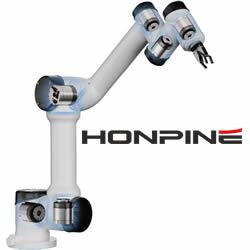Consumer Robotics Market to Reach $6.5 Billion in 2017, While More Complex Personal Robots Lay Just Out of Reach, According to ABI Research
iRobot is still the main player, but more Asian-based companies are coming out with competing products and newer products like window-cleaning robots.
OYSTER BAY, N.Y.--The market for consumer robots was $1.6 billion in 2012, dominated by the task and entertainment segments. This will grow to $6.5 billion in 2017 and will still be dominated by the same segments, with security/telepresence becoming more of a significant third segment. iRobot is still the main player, but more Asian-based companies are coming out with competing products and newer products like window-cleaning robots. "We are seeing more personal robot R&D from Western companies and more task robot development from Asian companies," noted research director Philip Solis, "which is a reversal of past development trends."
Application processors and the array of sensors used in smartphones and media tablets have achieved great economies of scale for components that consumer robotics will leverage. The market for processors, microcontrollers, sensors, and physical components including actuators, servos, and manipulators was a little over $700 million in 2012 and will grow by five times that amount by 2017. The semiconductor portion of that is well over a third and will grow as products become more complex and capable.
While the market for consumer robots is trudging ahead and growing, the lingering stagnant global economy has suppressed its market potential. There are also some safety concerns holding back the market, such as the additional cost of diverse redundancy for sensors. "What happens if a robot falls down the stairs while someone is walking up, or gets caught on a lamp power cord and pulls the lamp down and starts a fire?" added Solis. "This is a gating factor to take-up of more complex personal robots - solvable but with additional cost."
Additionally, the applications and business models for more general personal robots needs to be worked out. Home eldercare is being targeted first for insurance- and retirement income-related potential.
These findings are part of ABI Research's Consumer Electronics (http://www.abiresearch.com/research/service/consumer-electronics/) Research Service.
ABI Research provides in-depth analysis and quantitative forecasting of trends in global connectivity and other emerging technologies. From offices in North America, Europe and Asia, ABI Research's worldwide team of experts advises thousands of decision makers through 70+ research and advisory services. Est. 1990. For more information visit www.abiresearch.com, or call +1.516.624.2500.
Featured Product

